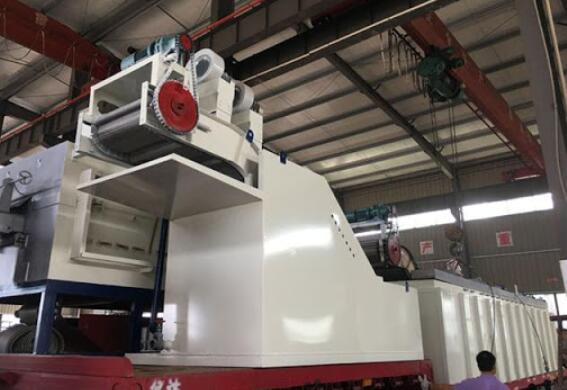Regenerative magnesium reduction furnace of principle

The regenerator unit composed of regenerator is arranged in a cross position at one end of the side of the furnace. Each regenerator is provided with multiple burner nozzles arranged in a row and arranged symmetrically at the other end. The air or gas enters the left regenerator group through the reversing system and pipelines to be preheated to about 1000℃ and then enters the furnace through the row of burner arranged on the regenerator.
After preheating, the air and gas are burned violently to generate a large amount of heat, which heats the body of the reducing tank. The smoke from combustion enters the right regenerator group through the right burner nozzle. At this time, the regenerator on the right is in a state of heat absorption. When the flue gas passes by, a large amount of heat carried by the flue gas is absorbed by the regenerator (ceramic honeycomb body or ceramic ball) in the regenerator on the right, and then discharged from the chimney through the pipeline and the reversing system. After a commutating cycle, the former endothermic regenerator group releases heat, while the former exothermic regenerator group absorbs heat.
At this point the commutator system operates to change the way air and gas enter the furnace. The entry direction of gas and air is reversed to the opposite side of the original entry direction. Repeat the combustion process described above. After this combustion process, the flue gas temperature dropped greatly, and the flue gas temperature dropped from 1200℃ or so in the traditional combustion mode to below 150℃, effectively utilizing energy and reducing loss.
The fuel used in the regenerative magnesium reduction furnace of high efficiency, energy saving and environmental protection can be changed from the traditional raw coal to the low-calorific value generator gas or converter gas, coke oven gas, natural gas and so on. Compared with traditional fuel, using gas not only increases the combustion efficiency, but also reduces the pollution to the environment. By controlling gas and air flow, problems in the furnace can be well controlled, the temperature fluctuation in the furnace can be avoided, the service life of the reduction tank can be improved, the temperature in the furnace can only fluctuate very little near the optimal reduction temperature, and the output and quality of metal magnesium can be improved.
The combustion mode is direct combustion curtain wall type and diffusion type. After the air gas enters the furnace, it is fully mixed and burned. The high-temperature airflow convints along the gas path of the furnace sidewall -- the top -- the other end. Saves combustion space in furnace. The working area of the reducing tank in the furnace is not directly swept by the high temperature airflow. The heating temperature of each tank is uniform and the durability of the tank is improved.
The use of the high efficiency, energy saving and environmental friendly regenerative magnesium reduction furnace can reduce the flue gas temperature of the discharge furnace (1200℃ lower than 150℃), and increase the heat utilization rate of the reduction furnace from the traditional 8-10% to more than 50%, with good energy saving effect and high economic and environmental value. It is of practical significance to strengthen the service life of reduction tank and improve the output and quality of metal magnesium.






